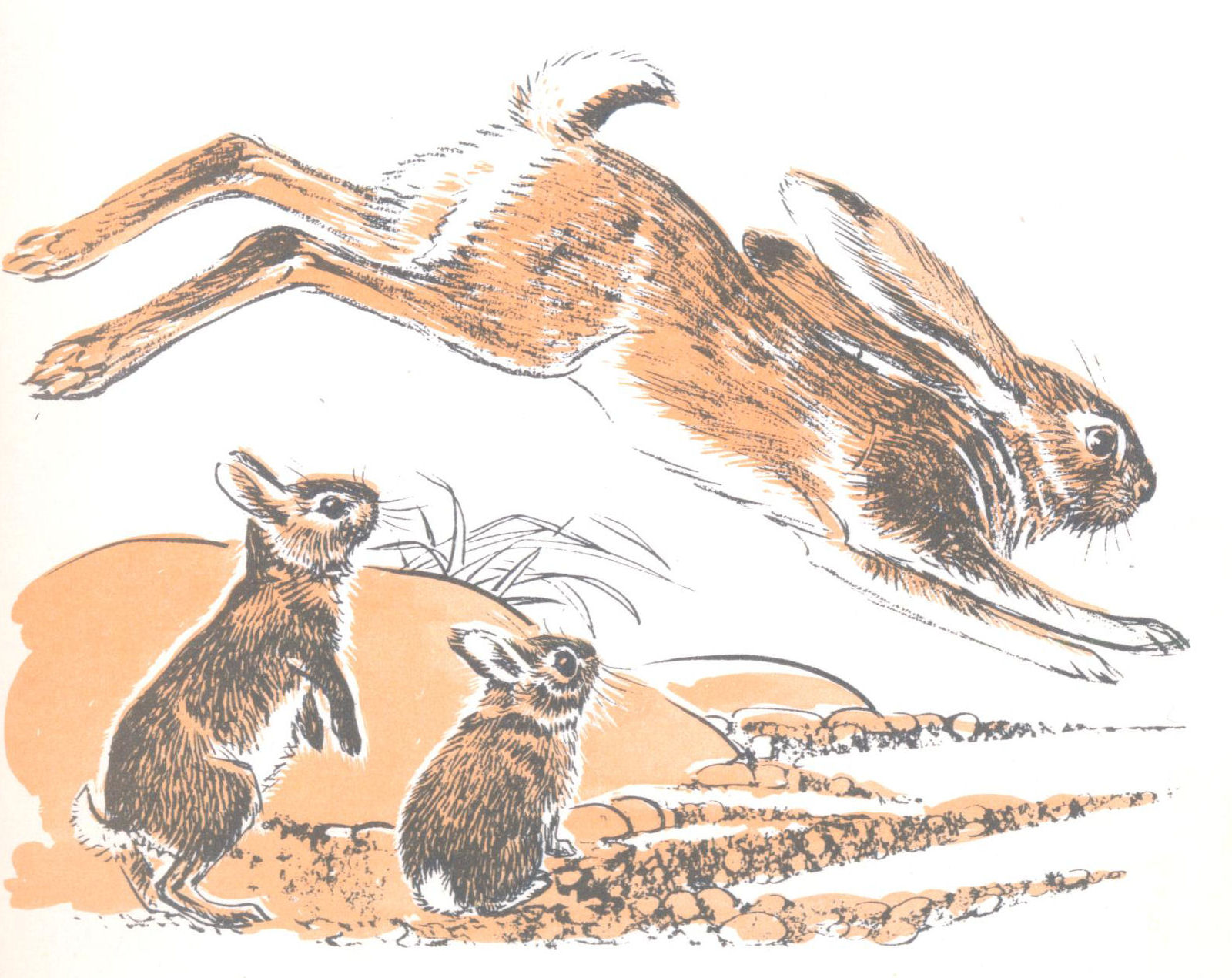104.WHAT’S THE DIFFERENCE BETWEEN RABBITS AND HARES?
One of the gentlest of all animals is the hare. When you consider how mild, timid, and defenseless this creature is, you might wonder how it can survive in a world full of enemies. But then you’ve also probably noticed its strong back legs. Those legs give it plenty of speed and endurance. And, of course, you know how rapidly hares and rabbits breed. That’s another reason why they manage to survive.
Hares and rabbits are rodents, which means they have long, sharp front teeth. Their back legs are longer than their forelegs, so that they actually run faster uphill than downhill! When they are pursued, they resort to some clever tricks. One is to crisscross their tracks, and the other is to take huge leaps in order to break the scent. They can also signal danger to each other by thumping the ground with their back feet.
Hares and rabbits are purely vegetarians, but they can live very well on the inner bark of trees. There are many differences between hares and rabbits. Hares are larger, and their feet and ears are longer. Hares do not dig burrows or live in groups, as do rabbits. Hares are born open-eyed and furry, while rabbits are born blind and hairless. Hares and rabbits never mate.
North America is the home of many different types of hares. One of the best known is the jack hare, which is usually mistakenly called “jack rabbit.” It is found throughout the West. Jack hares are more than 0.5 meters in length and have enormous ears. They are so fast that they can sometimes make a leap of 6 meters. They are a great nuisance to farmers in the West, and are often rounded up and killed by thousands.
The March hare, whom we know from “Alice in Wonderland,” is a common European hare. In March, its mating season, it disregards caution, coming out at all times of the day, and performing amusing acrobatic feats.
Rabbits came originally from the western shores of the Mediterranean. They are social animals, living together in burrows, called “warrens.” A rabbit may mate when it is six months old. Its young are born within a month. There may be from three to eight in a litter and a female rabbit may bear from four to eight litters in a year. So if the rabbit has no natural enemies, it can become quite a nuisance. In Australia for instance, three pairs of rabbits were introduced many years ago, and today the rabbit is a great national pest!



Leave a Reply